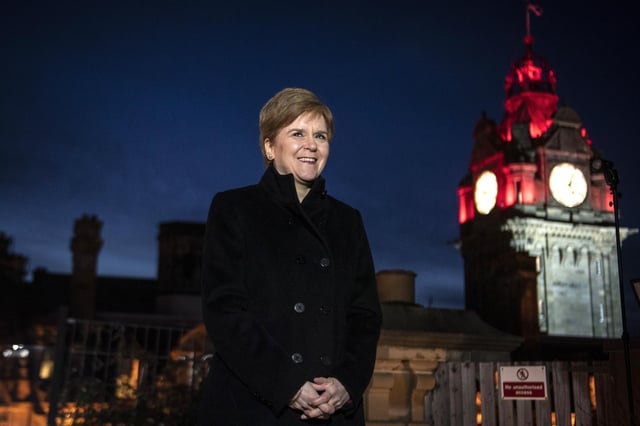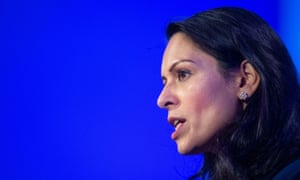GREEN CAPITALI$M #P3
Scotland's new National Investment Bank launched with demand to focus on green investments
Scotland’s new national investment bank should be an institution set apart from politics, its chairman has said
As a call was made on its launch day for it to tackle falling productivity and invest in the green economy.
By Gina Davidson
Monday, 23rd November 2020, 7:00 am

Nicola Sturgeon on the terrace of the headquarters of the Scottish National Investment Bank.
The Scottish National Investment Bank will use £2 billion of Scottish Government funding over its first decade to invest in businesses and projects which aim to help Scotland meet its 2045 net zero carbon target, tackle geographic inequalities and foster innovation in the country's businesses.
However profit targets for the bank have not yet been set and its chair, Willie Watt, said he does not expect money to be flowing into the bank for the first few years.
Launching the bank today, First Minister Nicola Sturgeon described the project as “one of the most significant developments in the lifetime of this parliament” while Mr Watt said he hoped the bank would eventually become a national, non-political institution.
“I want it to become a trusted institution that is seen as being owned by the whole of Scotland," he said. “A non-political, cornerstone institution in the investment landscape in Scotland.

“I want it to have a list of really good investments against each of its three missions so we can look back and say that we actually invested against these missions.”
The Scottish National Investment Bank will use £2 billion of Scottish Government funding over its first decade to invest in businesses and projects which aim to help Scotland meet its 2045 net zero carbon target, tackle geographic inequalities and foster innovation in the country's businesses.
However profit targets for the bank have not yet been set and its chair, Willie Watt, said he does not expect money to be flowing into the bank for the first few years.
Launching the bank today, First Minister Nicola Sturgeon described the project as “one of the most significant developments in the lifetime of this parliament” while Mr Watt said he hoped the bank would eventually become a national, non-political institution.
“I want it to become a trusted institution that is seen as being owned by the whole of Scotland," he said. “A non-political, cornerstone institution in the investment landscape in Scotland.

“I want it to have a list of really good investments against each of its three missions so we can look back and say that we actually invested against these missions.”
However Scottish Liberal Democrat leader Willie Rennie said the SNIB must move quickly in the light of the Covid pandemic, “especially when the challenges are so great on climate change and the green economy.”
He added: “It is important that we use the bank to lever that change, and that we use it for better productivity. It should lever in money to create jobs and opportunities, and create the low-carbon green economy for the future of our country and the planet."
Referencing the problems experienced by the Bifab yards despite government help, he said: “We see stubborn problems, such as companies that create offshore wind farms choosing to go to other parts of the world, and we know action is needed.”
MSPs unanimously passed plans for the bank in January, with appointments taking place in recent months before its official launch today. The first investment, officials announced, will be Glasgow-based laser technology firm M Squared.
Funding by the SNIB will be provided in multiple forms, according to Mr Watt, including through loans and equity purchases.
Ms Sturgeon said: “The Scottish National Investment Bank will help to tackle some of the biggest challenges we face now and in the years to come, delivering economic, social and environmental returns.
“It is hitting the ground running with its first major investment in M Squared – a great example of the ambitious and innovative companies we have here in Scotland that will be key to our economic recovery and future prosperity.
“The launch of the bank is one of the most significant developments in the lifetime of this parliament, with the potential for it to transform, grow and decarbonise Scotland's economy.”
Dr Graeme Malcolm, the founder of M Squared, said: “We are delighted that the Scottish National Investment Bank has invested in M Squared as its very first business – our shared commitments to society and the environment makes this an ideal partnership that will enable accelerated growth and progress in frontier technologies.”


/cloudfront-ap-southeast-2.images.arcpublishing.com/nzme/VYASSAGNS4TJBFSJAK7P67MMBA.jpg)

/cloudfront-ap-southeast-2.images.arcpublishing.com/nzme/AG7RGQFEIDSNJCO64CRIGD7AZU.jpg)

/cloudfront-ap-southeast-2.images.arcpublishing.com/nzme/NQHA3OFC6BNARK3FGMP3JEDBGI.jpg)